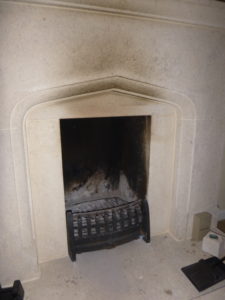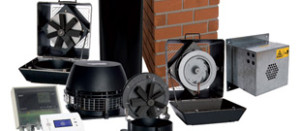



If you can smell smoke in your house long after the fire has been extinguished or in upstairs rooms, you should contact a chimney expert to have a look at your chimney, flue and fireplace. With over 15 years of experience, Turner Baker provides quality chimney liner installations. To book a chimney survey call us today on 01432 839123.
When you open the door of your wood burning stove a waft of smoke may enter the room. This happens momentarily and is entirely normal. The smell of smoke in other parts of the house, however, is not normal and could be caused by smoke leaking from the flue.
One of the by products of combustion is carbon monoxide which is a potentially lethal gas. It is undetectable unless you have a carbon monoxide alarm in the room but causes drowsiness and in extreme circumstances, death.
 If your chimney is unlined smoke may be able to escape through weak joints in the brickwork of the chimney into upstairs rooms instead of escaping out of the top of the chimney into the open air.
If your chimney is unlined smoke may be able to escape through weak joints in the brickwork of the chimney into upstairs rooms instead of escaping out of the top of the chimney into the open air.
Alternatively, if you have a multi flue chimney stack it may be that smoke is getting drawn up one flue and then drawn back down another. This is not uncommon where there is an extractor fan fitted in the property that effectively ‘pulls’ the air down the adjacent flue and into the room.
Smoke can also be drawn back into a flue due to changes in weather patterns or atmospheric conditions.
If your open fire or wood burning stove doesn’t work very well and suffer from the effects of a poor draw, smoke can spill back into the property as a consequence (see smoke stained chimney piece right)
There are various solutions to the problem of smelling smoke in your property. The most important thing to do is correctly identify where the smoke is escaping from and why.
One of the most useful diagnostic tests for this type of chimney problem is to carry out a sealed smoke test. The fireplace and the top of the chimney stack are sealed and smoke pellets are released into the flue. We then inspect very carefully to find out where the smoke is escaping from.
Smoke is similar to water in that it will follow the easiest route and can often end up in places that you wouldn’t expect to find it – underneath floor boards, escaping from around the sides of a badly fitted chimney piece, via door frames etc.
Once the cause of the leakage has been found you then need to find a solution.
If smoke is leaking through weak internal brickwork in an unlined flue the safest option is to have it lined by a professional chimney lining company.
There are several different flue lining options available and it is important that you talk through the advantages of each system with a professional before deciding which option is right for you.
The entry point into chimney and flue linings is stainless steel. There are lots of different grades and ratings of stainless steel, but as a rule of thumb, the higher the grade the better.
Stainless steel can be available in either a flexible format (to accommodate bends in the chimney or flue) or as a rigid piece. Flexible stainless steel liners are supplied as one long piece whereas rigid stainless steel is supplied in sections which are slotted together.
Flexible stainless steel flue liners are available from Turner Baker Ltd for either multi fuel stoves or for gas and oil appliances.
A relative newcomer to the market is the Furanflex thermosetting resin lining system. In layman’s terms, this refers to a liner that is supplied as a soft malleable material which can be inserted into a chimney and which is then steamed or ‘cured’ into a hardened structure that is resistant to heat and high temperatures.
There are many benefits to using a Furanflex lining system. Firstly, the product is installed as a flexible tube. For properties with chimneys that have bends in them – and this is certainly the case for a lot of older properties – this is a great benefit.
The liner can be installed freestanding and it can mould to take the existing shape of the chimney which maximises the cross-sectional area of the flue. Various other lining systems are a set shape and may reduce the size of the flue which in turn affects performance.
Additionally, the Furanflex liner doesn’t adhere itself to the chimney and can, therefore, be removed if necessary. This makes it an ideal option for heritage properties with listing restrictions which won’t allow for permanent changes to the structure.
 This system is available in a range of different diameters and lengths which make it flexible to install – a solution can be found for most types of chimney.
This system is available in a range of different diameters and lengths which make it flexible to install – a solution can be found for most types of chimney.
If your fire is suffering from the effects of a poor draw and this is the reason for the smell of smoke in your property your chimney specialist may recommend that you have a chimney fan fitted.
A mechanical fan (see picture right) is attached to the top of the chimney and acts to encourage the flow of smoke up and away from the fire or woodburner.
The team at Turner Baker have worked on many different types of properties and have found successful solutions to safely prevent smoke escaping into the house. If you would like more information regarding our chimney lining services, then please contact us on 01432 839123.



